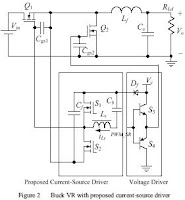Switch Protection Design - Fast-Recovery Diodes
Abstract
The number of fast recovery applications in high power systems
continues to grow leading to various dynamic constraints and
hence different diode designs and behaviours. Along with
conventional RC (“SCR-type”) and C (“GTO-type”) snubber
conditions, snubberless conditions in both IGBT and IGCT
applications are gaining ground at ever higher currents and
voltages (presently 6 kV). Within these two groups, the further
distinctions of “inductive” and “resistive” commutation di/dt must
be made for an optimal diode design. Diodes capable of high
reverse di/dt and dv/dt can today be realised thanks to controlled
life-time profiling which will be described here with both measured
and simulated results. As will also be explained, such “robust”
designs, though essential for snubberless operation, may be “less
robust” under snubbered conditions so that a clear understanding
of the application (Snubber, Free-Wheel, Clamp, Resistive or
Inductive di/dt) is required for the correct choice or design of a fast
recovery diode. The different diode commutation conditions will
be described and categorised and the optimal diode design
identified with supporting measurements and simulations.

Fig 2 “Inductive” commutation circuit fitted
with snubber and clamp
Traditionally the diode under consideration (in this case a
Free-Wheel Diode (FWD)) is fitted with a snubber and may also
be fitted with a clamp as shown in Fig. 2. Thus for the inductive
commutation circuit, we can define the additional sub-conditions
consisting of permutations of the snubbered/unsnubbered &
clamped/unclamped conditions whereby the snubber controls
the Duet’s dv/dt whereas the clamp controls its peak voltage.
More pdf
with snubber and clamp
Traditionally the diode under consideration (in this case a
Free-Wheel Diode (FWD)) is fitted with a snubber and may also
be fitted with a clamp as shown in Fig. 2. Thus for the inductive
commutation circuit, we can define the additional sub-conditions
consisting of permutations of the snubbered/unsnubbered &
clamped/unclamped conditions whereby the snubber controls
the Duet’s dv/dt whereas the clamp controls its peak voltage.
More pdf
Labels: Fast-Recovery Diodes, Snubber





























